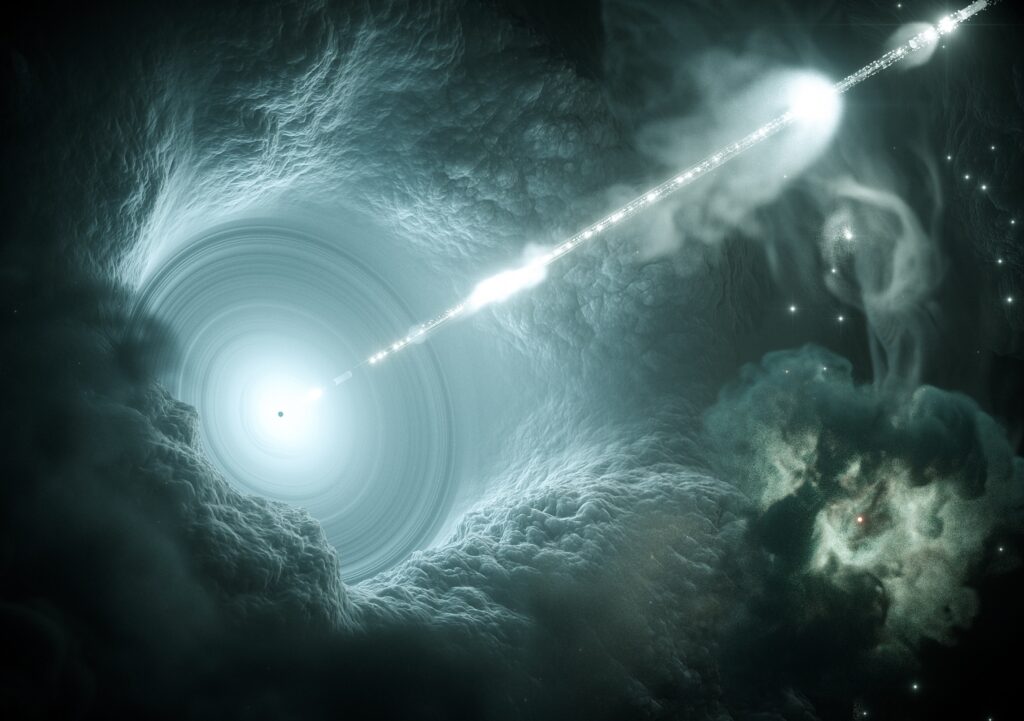They are like ghosts, billions of them pass through a person every second
However, their detection is extremely difficult. That’s why China is building a giant detector at the bottom of the ocean
The Chinese are building something that has no parallel in the world. Scientists are preparing to launch the gigantic neutrino detector (TRIDENT), which will study the mysterious particles, called neutrinos, under the surface of the ocean.
Don’t miss: New Android virus steals messages and photos. It can also hide in your phone
Scientists will study neutrinos
The largest deep-sea detector (Tropical Deep-Sea Neutrino Telescope) in the world, called Hai ling in Chinese, will be anchored to the ocean floor in the western Pacific. When completed in 2030, it will look for unusual flashes that produce mysterious particles – neutrinos.
Every second, about 100 billion neutrinos pass through every square centimeter of the human body. And yet, true to their name, they have no electrical charge and almost zero mass, which means they hardly interact with other kinds of matter.
Thanks to the slowing down, however, astrophysicists can trace the origins of some particles billions of light-years away to ancient cataclysmic stellar explosions and galactic collisions. And this is where the new underwater radio detector TRIDENT comes into play.
“Using the Earth as a shield, TRIDENT will detect neutrinos penetrating from the opposite side of the planet,” researcher Xu Donglian told reporters at a press conference. “Because TRIDENT will be located near the equator, it can receive neutrinos coming from all directions, allowing for observations of the entire sky without blind spots.”
Zdroj: Shanghai Jiao Tong University
The gigantic TRIDENT detector at the bottom of the ocean
Neutrinos are everywhere. After photons, they are the most abundant subatomic particles in the universe and are produced in the nuclear fires of stars, in huge supernova explosions, in cosmic rays and radioactive decay, and in particle accelerators and nuclear reactors on Earth.
Despite their ubiquity, they are incredibly difficult to detect. It was first discovered in 1956 when it was coming out of a nuclear reactor, and many experiments since then have recorded the constant bombardment of particles coming at us not only from the Sun, but also from space.
Neutrinos pass through most matter, including our entire planet, completely undisturbed, but occasionally interact with water molecules. When neutrinos pass through water or ice, they sometimes produce byproducts called muons that emit flashes of light. By studying the patterns these flashes create, scientists can reconstruct the energy and sometimes the source of the neutrinos. However, to increase the probability of neutrino particle interactions, the detector must be placed under large amounts of water or ice.
China’s new giant detector will consist of more than 24,000 optical sensors mounted on 1,211 fibers that will swing upward toward the surface from a fixed anchor point on the ocean floor.
The detector, arranged in the shape of Penrose tiles, will scan an area of 7.5 cubic km for neutrinos in full operation. The current largest neutrino detector in the world, IceCube, located at the Amundsen-Scott Station at the South Pole in Antarctica, has a monitoring area of only one cubic kilometer – this means that TRIDENT will be significantly more powerful, more sensitive and much more likely to find neutrinos.
Preview photo source: DESY / Science Communication Lab, source: Nature Astronomy, Live Science
2023-10-19 16:14:11
#China #building #gigantic #detector #ocean #floor #study #neutrinos #elusive #ghosts #particles


